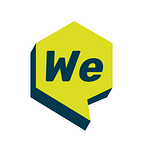Redefining Sustainable Development Goals To Simplify Climate Action
A different take on achieving the SDGs that simplifies climate action.
The article was originally published on WeNaturalists. For similar stories, head to our Explore section.
The Industrial Revolution has been a real turning point in history. Its advent in the 18th century has defined and shaped our society. Economies across the globe saw unprecedented and sustained growth by adopting modern production methods. These changes gave a massive thrust to trade and business.
At the same time, it’s been detrimental to the health of the planet’s ecosystems. Be it exploiting natural resources, excessive damage to the environment by using fossil fuels, degradation of land, deforestation and more — since the pre-industrial era, the world has already warmed by around 1.2 degrees celsius on average.
A hard look at our state of managing business operations and its effect on natural resources has become increasingly essential. We need cleaner air, a reproductive soil ecosystem, and pure and potable water sources. The future of the human race hinges on the availability of these basic amenities.
That’s why it became necessary for us to adopt certain goals that put nature at its center — the Sustainable Development Goals (SDGs). These goals are urging the world to take up alternatives to carbon-emitting products, services, systems, practices and more. And ultimately, turn nature-positive.
What are the Sustainable Development Goals?
The 17 SDGs of the United Nations were introduced at the United Nations Conference on Sustainable Development held in Rio de Janeiro in 2012. They are a set of objectives that are considered essential for creating a better and more sustainable world. The sustainable development goals and targets are to be achieved by 2030. These goals form a major component of the 2030 Agenda for Sustainable Development. The 17 UN SDGs were adopted in 2015, but they were actually a culmination of efforts that began decades earlier.
There are 17 SDGs to help achieve the socio-economic and global welfare goals.
Each SDG was born to ensure every contribution, big or small, can have a global impact.
Let’s take a brief look at these SDGs as part of the UN agenda for 2030
The SDG Pyramid: Our Take on the Core Goals to Achieve a Sustainable Future
As you may notice in the pyramid above, some of the goals, which we could call the ‘core’ goals can pave the way for the remaining goals to be achieved.
The SDG Pyramid depicts -
- At the top of the Pyramid is Climate Action (13) — It takes precedence over every goal — it’s the raison d’etre of the SDGs. It indicates that all our actions must be climate actions — it’s up to us to make it count. And now, let’s talk about the enablers who will make things happen on the ground. This is our most important takeaway because it shows how these goals are interconnected. It also shows how the following six goals can lead us to achieve the remaining goals.
- Quality Education and Awareness (4) is the cornerstone of progress and growth. Enabling it would lead to achieving No Poverty (1), Gender Equality (5), Decent Work and Economic Growth (8), Reduced Inequalities (10), Responsible Consumption and Production (12), Peace, Justice and Strong Institutions (16).
- Clean Water and Sanitation (6) is a must for us to achieve No Poverty (1), Zero Hunger (2), Good Health and Well-being (3), Sustainable Cities and Communities (11).
- Industry, Innovation and Infrastructure (9) is a must for eliminating Poverty (1) because it creates Decent Work and Economic Growth (8) and enables the creation of Sustainable Cities and Communities (11).
- Life Below Water (14) and Life Above Land (15) is the most critical component to create a balanced ecosystem. Only if we coexist with nature can a sustainable environment can be created for eradicating Poverty (1), Zero Hunger (2), Good Health and Well-being (3), Decent Work and Economic Growth (8).
- Affordable and Clean Energy (7) is a necessity for building Sustainable Cities and Communities (11), eliminating Poverty (1) and achieving Zero Hunger (2).
It is important to note that while this is certainly not a hierarchy, it’s important to understand that one way to achieve all the goals is through acting on one.
For example, if an ocean conservationist (SDG 15) takes up the task of protecting marine species, coral reefs and more — he’s likely creating jobs (SDG 8), promoting responsible consumption and production (SDG 12), and by the virtue of his profession, acting on protecting the climate (SDG 13). And that’s the roadmap to tackling the climate crisis.
Let’s Make Our Actions Count
Our actions must be sustainable and in harmony with the environment. With the climate crisis breaking down our doors, each of the steps taken towards the growth of the human race — be it industrialization, infrastructure development, energy consumption, food and innovations — needs to follow a sustainable route. This is the only way we can make sustainable development a reality.
After years of its rollout, individuals and organizations as well as public and private stakeholders are facing several challenges to achieve these goals. To address it, several monitoring tools have been developed. Stay tuned to know more about it.
